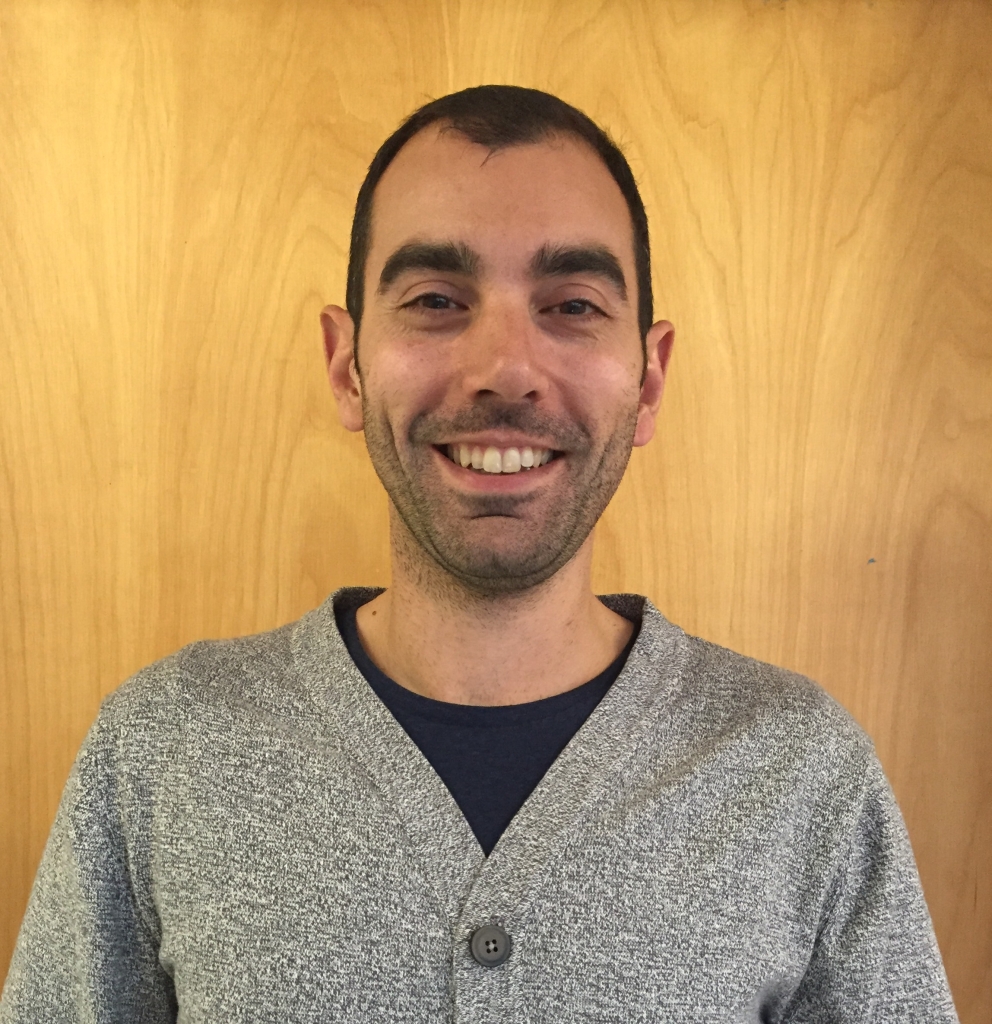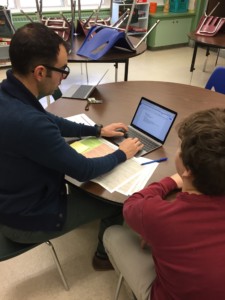 Add to favorites
Add to favoritesAnswered by Mike Di Donato, OCT and Brian Hayes, OCT
In order to be a self-advocate, students who have learning disabilities (LDs) need to first understand how their LDs affect their learning. When students are diagnosed with LDs, parents, teachers, special education teachers and child psychologists may not always explain to the student how their LDs affect their learning and students are left in the dark.
Students with LDs have the cognitive ability to learn and understand, which is why it is so important for a student’s support group to take the time to deeply explain LDs using “kid friendly” language, free of educational jargon. For any student to understand how they learn is key to success and for students with LDs, it is imperative that they can understand and eventually communicate the way they learn.
We liken the self-advocacy process to building a house, where students’ understanding of their LDs is the foundation. Once the student understands their LDs, they can then move on to build the frame of their house, consisting of student knowledge of their own strengths and needs. Once the frame of the house is up, students can begin to put the roof on. The roof of the house represents the student becoming mindful of the variety of tools and strategies to assist them on their learning journey. The finishing touches are put on the house when the student is ready to put all of their learning about themselves into action to become successful self-advocates and take the control of their own learning. Our students explain this as “owning [their] LDs”.
The process of self-advocacy is best achieved in a thought-out manner in order for students to be able to digest the information in small chunks. The following is the process that we have successfully followed with our students.
Step 1: Building the Foundation – Helping Students Understand their LDs
During this step, the teacher takes time to sit with the students and read through Helping Students Understand their Learning Disability: A checklist designed to help students become better self-advocates. We keep an electronic copy of this checklist and share it with students via Google Drive so that they can return to the information if needed.
Click here to access the Helping Students Understand their Learning Disability checklist.
We also use the York Region’s Understanding Learning Disabilities - How Processing Affects Learning waterfall chart in order to consolidate our own professional learning about LDs. This helps by giving us the background knowledge we need when students have questions about certain sections of the checklist. This step is the most crucial as you are establishing a learning partnership with each student.
Step 2: Building the Frame – Student Strengths and Needs
After the time spent one-on-one with each student to help them better understand their LDs, we use a whole group approach to understanding strengths and needs. Some strengths and needs may come to light during the one-on-one student conferences; however, by using a collaborative approach, students will often see that they share similar strengths and needs with their peers.
In order for the students to think about their strengths, needs, and learning, we often ask: How does this impact your learning?
Step 3: Putting on the Roof – Finding Effective Tools and Strategies
Finding effective tools and strategies is an ongoing process in the classroom, as the learning environment should always be tailored to the learner. Ideally, we would all have the luxury of small class sizes which would allow us to create learning partnerships and learning environments that are driven by student need. Whether or not this is the case at your school, candid discussions can and should be taking place in every classroom. Providing a range of diverse learning tools and strategies is essential for some students, but good for all.
Some of the tools and strategies we use include, but are not limited to:
- Providing access to a variety of apps and programs that can support learning (students can choose the app/program that best fits their learning style);
- Structure and organization of routines;
- GAFE: Google Apps For Education (Leveraging Digital);
- Developing learning partnerships (student/parent/teacher/special education resource teacher/educational assistant);
- Goal setting and constant self-reflection;
- Use of success criteria and frameworks to focus learning, and
- Always understanding the WHAT, the WHY and the HOW of learning.
Step 4: The Finishing Touches – Putting Everything into Action
Each year, about two weeks after winter break, we notice our students are suddenly vastly more independent. Students begin self-advocating and applying multiple problem solving strategies to support their learning, without guidance from an educator. What may seem on the surface like an overnight change actually represents a 5 month process of guided self-examination. At this point students have developed enough understanding to work around their LDs and communicate their needs, but the process is far from over. Students will need to grow and adapt continually as they move through their education and the world outside of school. Though challenges still remain, students have laid the groundwork to be strong self-advocates for life and now have the confidence to adapt their tools and strategies to their needs throughout their learning journey.
Students with learning disabilities may develop a negative self-image in relation to their abilities and their potential for school success. By equipping these students with the skills necessary to self-advocate and not rely entirely on their parents and educators, students can build confidence and feelings of self-efficacy. In order to become successful self-advocates, students with LDs must first fully understand how their LDs affect their learning, have a firm grasp of their strengths, and be given the tools and strategies to accommodate for their areas of need. By taking the time to build a strong partnership with students, educators can help students with LDs to take their learning into their own hands and “own their LDs”.
Do you have a question about LDs? Click here to ask our experts!
![]()
 Brian Hayes is currently teaching grade 7 at Sagonaska Demonstration School in Belleville, Ontario. A seconded teacher from HPEDSB, Brian has been supporting students with a wide variety of exceptionalities from grades 6 - 10 both as a teacher within the Provincial Schools Branch and within his home board, however he has most closely worked with students with learning disabilities. As an educator, Brian believes that the exposure to a wide range of technologies, development of strong self-advocacy skills, and helping students learn about how they learn best are key to levelling the playing field in order for success for all students.
Brian Hayes is currently teaching grade 7 at Sagonaska Demonstration School in Belleville, Ontario. A seconded teacher from HPEDSB, Brian has been supporting students with a wide variety of exceptionalities from grades 6 - 10 both as a teacher within the Provincial Schools Branch and within his home board, however he has most closely worked with students with learning disabilities. As an educator, Brian believes that the exposure to a wide range of technologies, development of strong self-advocacy skills, and helping students learn about how they learn best are key to levelling the playing field in order for success for all students.
 Mike Di Donato is currently a Special Education Resource teacher in a grade 7 classroom at Sagonaska Demonstration School. He holds a Bachelor of Arts with Honours from Trent University and completed the Professional Program in Education in D’Youville College, New York. Prior to working at Sagonaska, Mike worked with students with exceptionalities in Mackenzie, British Columbia. He also taught grade 6 for several years in Trenton, Ontario where he decided to focus his professional career in Special Education. In 2011, Mike earned his Special Education Specialist qualification from the Ontario College of Teachers. Mike is a passionate educator who facilitates a growth mindset and progress in students with Learning Disabilities.
Mike Di Donato is currently a Special Education Resource teacher in a grade 7 classroom at Sagonaska Demonstration School. He holds a Bachelor of Arts with Honours from Trent University and completed the Professional Program in Education in D’Youville College, New York. Prior to working at Sagonaska, Mike worked with students with exceptionalities in Mackenzie, British Columbia. He also taught grade 6 for several years in Trenton, Ontario where he decided to focus his professional career in Special Education. In 2011, Mike earned his Special Education Specialist qualification from the Ontario College of Teachers. Mike is a passionate educator who facilitates a growth mindset and progress in students with Learning Disabilities.






